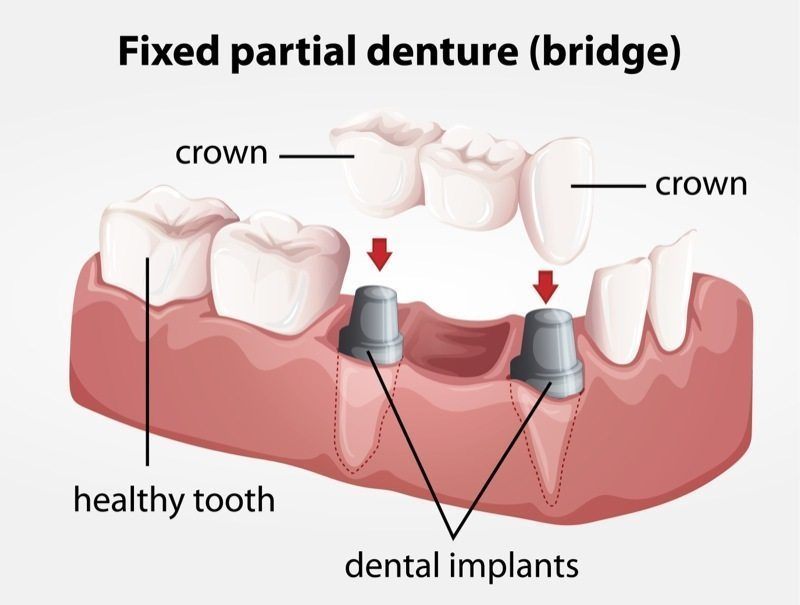
Dental caps and crowns are often used interchangeably in dentistry. Both are restorative treatments for damaged or decayed teeth. A dental cap, also referred to as a dental crown, is essentially a tooth-shaped cap that covers the entire visible portion of the tooth, restoring its strength and appearance. In essence, they serve the same purpose of preserving and protecting teeth. It’s important to remember that while there may be subtle differences in terminology, they are typically used to describe the same dental procedure. Your dentist will guide you in choosing the most suitable option for your specific dental needs.

Are Dental Caps and Crowns the Same Thing?
Dental caps and dental crowns are terms that are often used interchangeably, leading to confusion among patients. People often wonder if there is a difference between the two or if they refer to the same dental restoration. In order to understand the distinction between dental caps and crowns, it is important to delve into their definitions, purposes, and the procedures involved in their placement.
Defining Dental Caps
- Dental caps, also known as dental crowns, are custom-made dental restorations.
- They cover the entire visible portion of a tooth, aiming to restore its shape, size, and strength.
- Recommended for teeth that have undergone root canal treatment, have large fillings, or are severely damaged.
The Process of Placing Dental Caps
- It involves the removal of the enamel to create space for the cap.
- Impressions are taken to create a custom cap in a dental laboratory.
- The cap is cemented onto the tooth using dental adhesive.
- Materials used for dental caps include porcelain, metal, or a combination of both.
The Purpose of Dental Caps
- Dental caps protect and reinforce weakened teeth, preventing further damage or fracture.
- They restore the functionality of the tooth for proper chewing and biting.
- Dental caps enhance the tooth’s appearance by improving its shape, size, and color.
- Caps are designed to blend seamlessly with surrounding teeth for a natural look.
The Procedure for Placing Dental Caps
- Typically involves two dental visits.
- During the first visit, the tooth is prepared, and impressions are taken.
- A temporary cap is placed to protect the tooth until the permanent cap is ready.
- On the second visit, the temporary cap is removed, and the permanent cap is bonded using dental adhesive.
- Some post-procedure sensitivity or discomfort may occur but usually subsides within a few days.
Key Takeaways: Are Dental Caps and Crowns the Same Thing?
- Dental caps and crowns are two terms used interchangeably to refer to the same dental restoration.
- Both dental caps and crowns are used to repair and strengthen damaged teeth.
- They are custom-made to fit over the existing tooth and restore its shape, size, and appearance.
- Both dental caps and crowns can be made from various materials, such as porcelain, metal, or a combination of both.
- Whether they are called caps or crowns, the purpose is the same – to protect and restore the tooth’s functionality and aesthetics.
Frequently Asked Questions
What is the difference between dental caps and crowns?
“Dental caps” and “crowns” are often used interchangeably. Dental caps and dental crowns cover the entire tooth down to the gum line, providing extensive protection and support for severely damaged teeth. They serve purposes like restoring shape, size, and appearance and adding strength and protection. Essentially, both terms can be considered the same in many contexts.
Are dental caps and crowns made of the same material?
Dental caps and crowns share common materials like metal alloys, porcelain, ceramic, and resin, yet minor distinctions can exist. Porcelain fused to metal crowns might include a metal substructure for strength, while all-porcelain caps offer a more natural look. Material selection is based on individual patient needs and preferences.
How long do dental caps and crowns last?
Dental caps and crowns, while sometimes used interchangeably, share a similar lifespan ranging from 5 to 15 years or more. Their longevity depends on factors like materials, oral care, and habits. Maintaining good oral hygiene, regular dental check-ups, and avoiding habits like teeth grinding or biting hard objects can extend the life of both dental caps and crowns.
Are dental caps and crowns painful to get?
Dental caps and crowns are essentially the same in terms of the painless procedure involved. Both procedures begin with the application of local anesthesia to ensure patient comfort throughout. While post-procedure discomfort, usually manageable with over-the-counter pain relievers, may occur, it typically diminishes within a few days. If severe or prolonged pain arises, consulting the dentist is essential for evaluation.
Can dental caps and crowns be replaced?
Dental caps and crowns are essentially the same when it comes to replacement. If they become damaged, worn, or if the patient seeks a different appearance, both can be replaced. The procedure involves removal of the existing restoration, tooth preparation, and placement of a new cap or crown. Dentists assess the condition and recommend the best approach, making regular check-ups vital to catch issues before they worsen.
Final Summary: Are Dental Caps and Crowns the Same Thing?
Dental caps and crowns are terms often used interchangeably because they share a common function in dentistry. Both serve as protective restorations for damaged or weakened teeth, and they can also be replaced under certain circumstances. If a dental cap or crown becomes damaged, shows signs of wear and tear, or if a patient simply desires a different appearance, replacement is possible. The replacement process typically involves removing the existing restoration, preparing the tooth, and then creating and fitting a new cap or crown.
It’s crucial to consult with a dentist when considering the replacement of a dental cap or crown. Dentists will assess the condition of the restoration and recommend the most suitable approach. Regular dental check-ups play a significant role in monitoring the condition of dental caps and crowns, allowing potential issues to be addressed promptly before they escalate into more serious problems. So, while the terms “dental cap” and “dental crown” may have distinct technical differences, they share the commonality of being replaceable and require professional oversight to maintain dental health.
Call or Book appointment online
:Ace Dental Care Alpharetta office: 678-562-1555 - Book Now
Ace Dental Care Norcross office: 770-806-1255 - Book Now
Disclaimer
This blog post was generated by artificial intelligence. The content of this post may not be accurate or complete, and should not be relied upon as a substitute for professional advice. If you have any questions about the content of this post, please contact us.
We are constantly working to improve the accuracy and quality of our AI-generated content. However, there may still be errors or inaccuracies. We apologize for any inconvenience this may cause.





